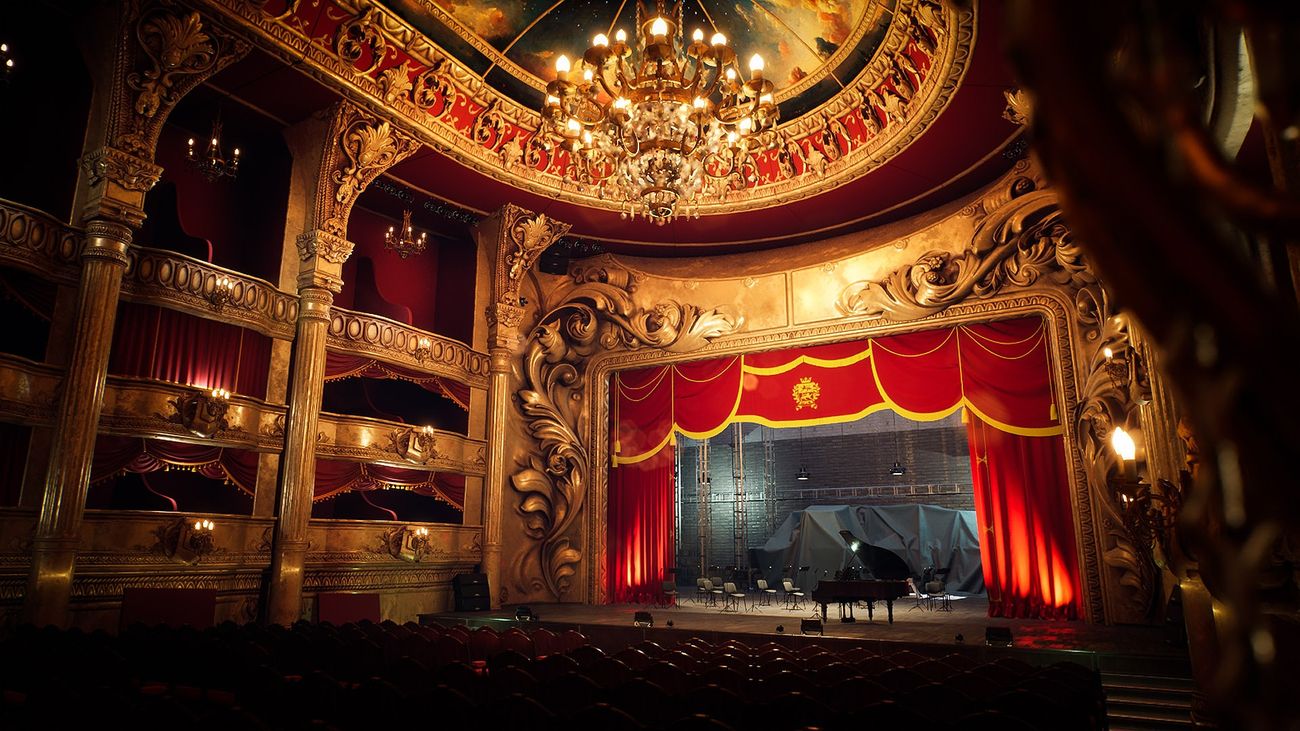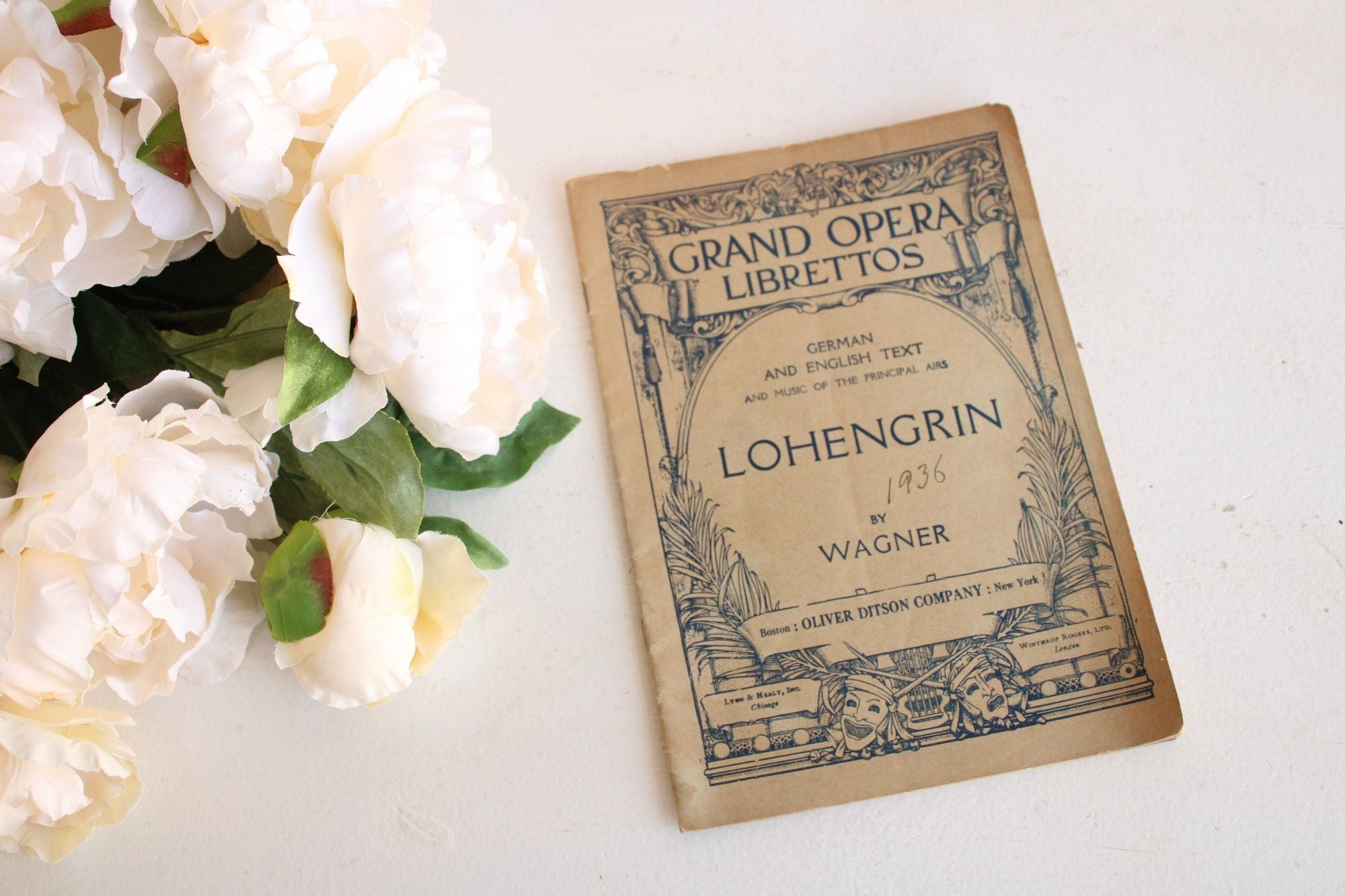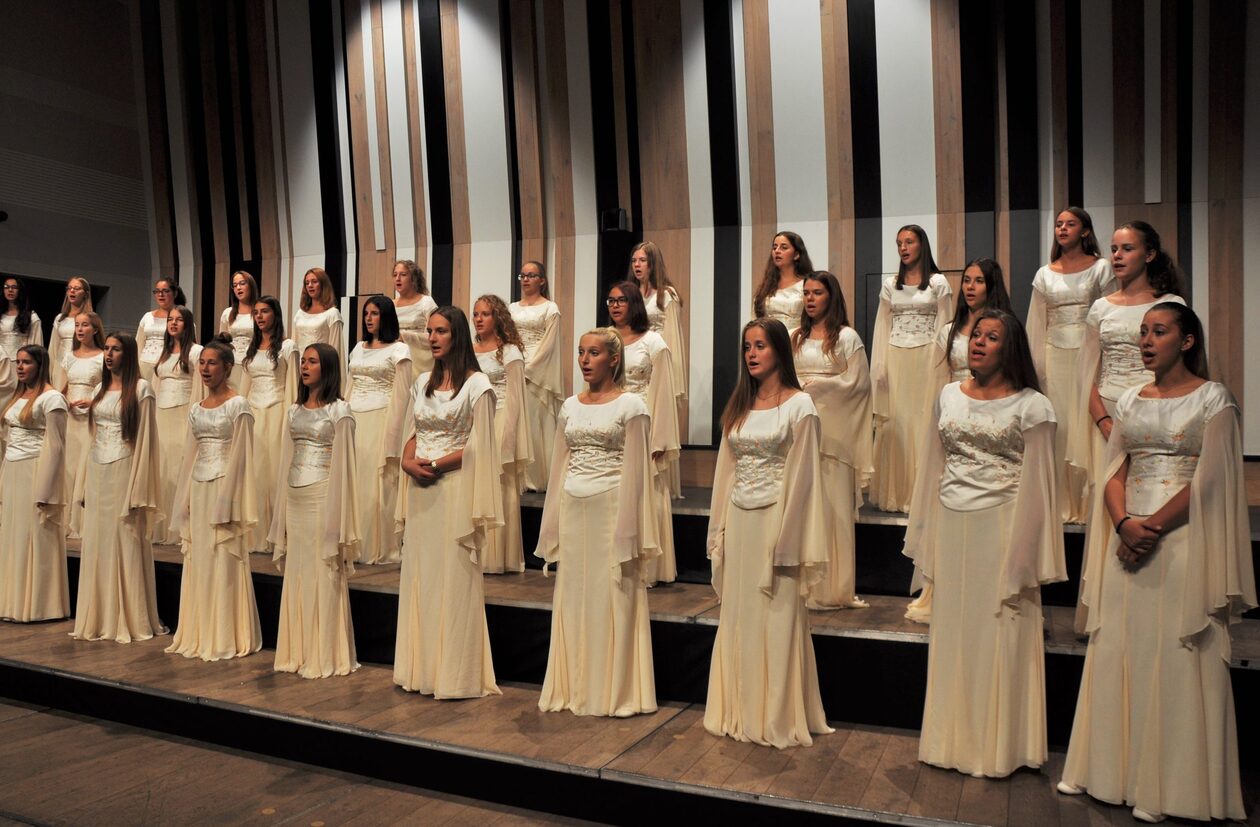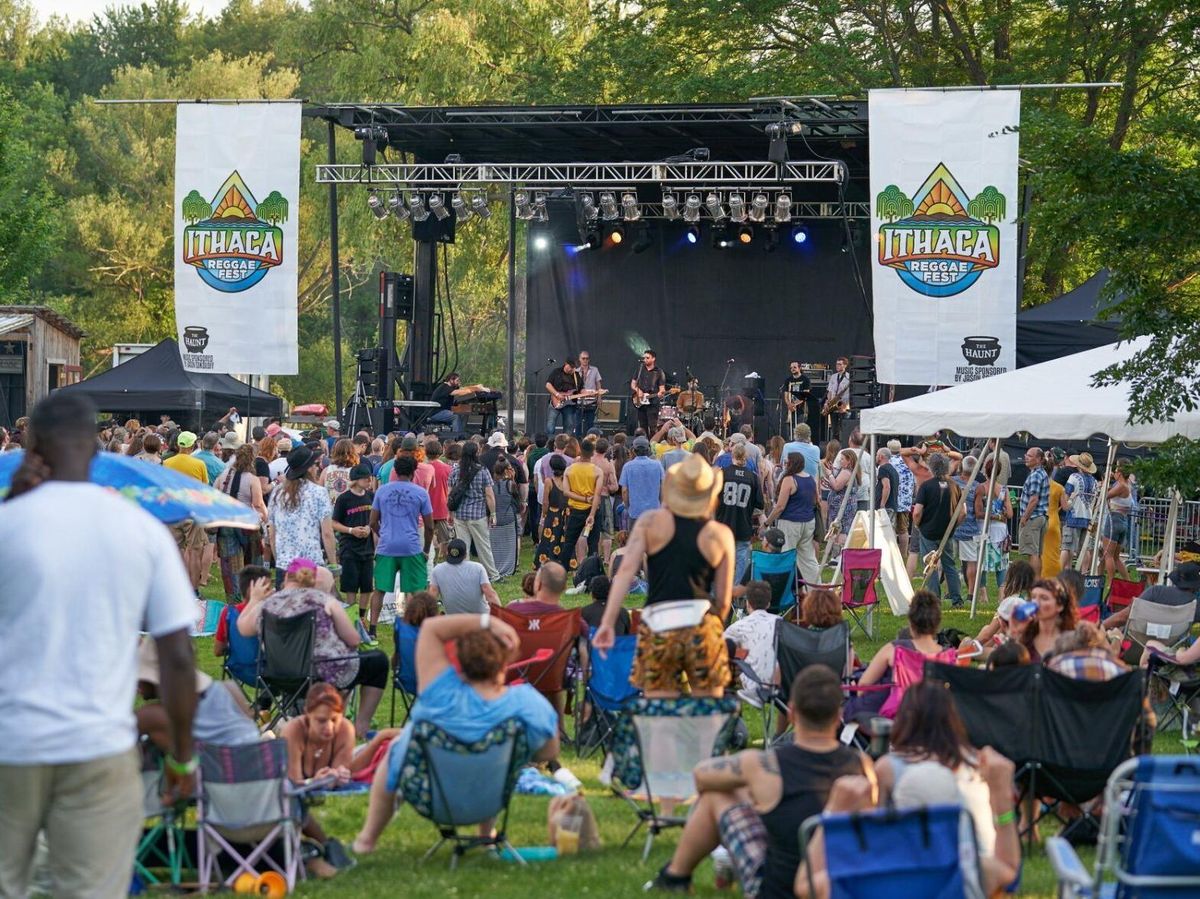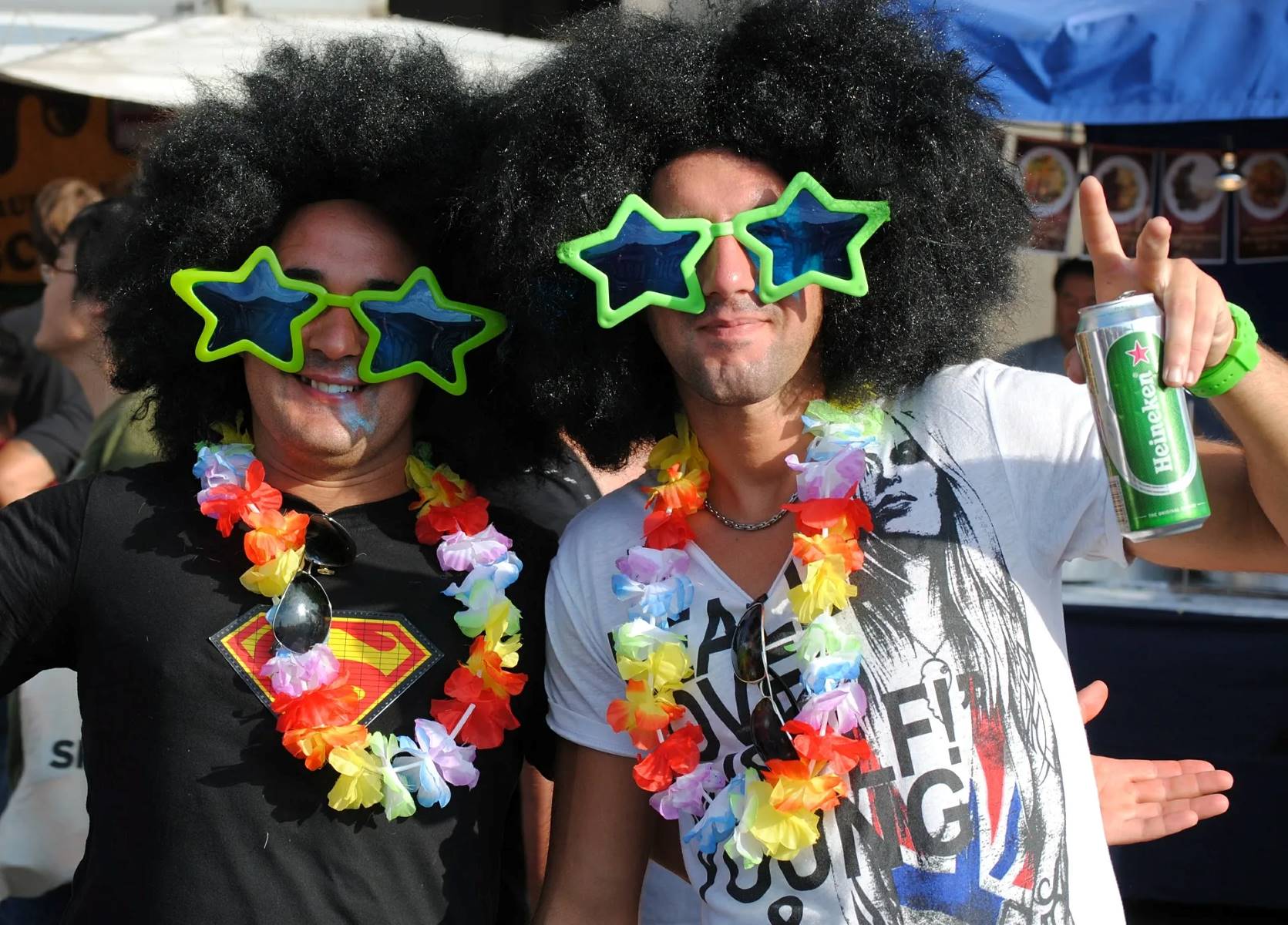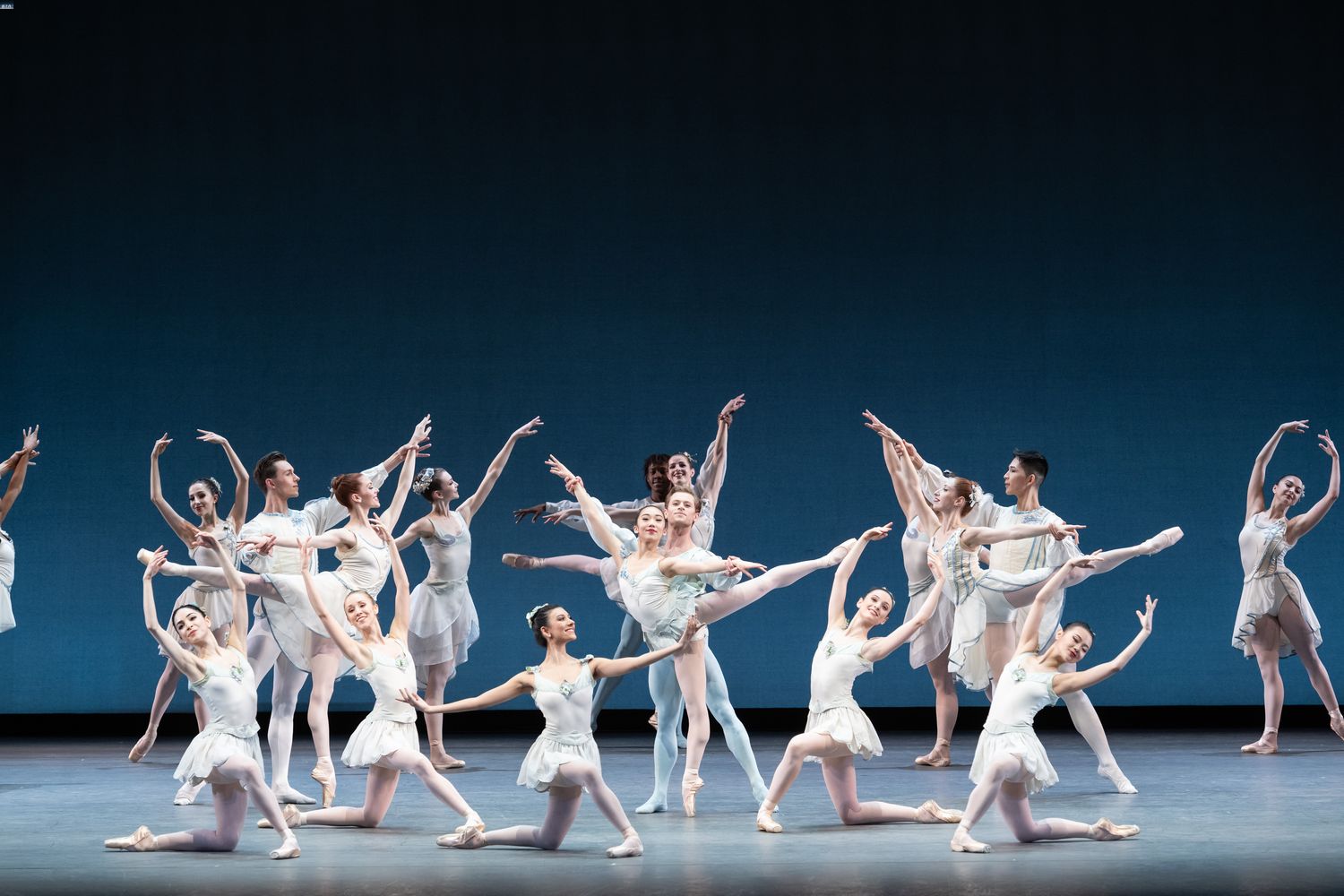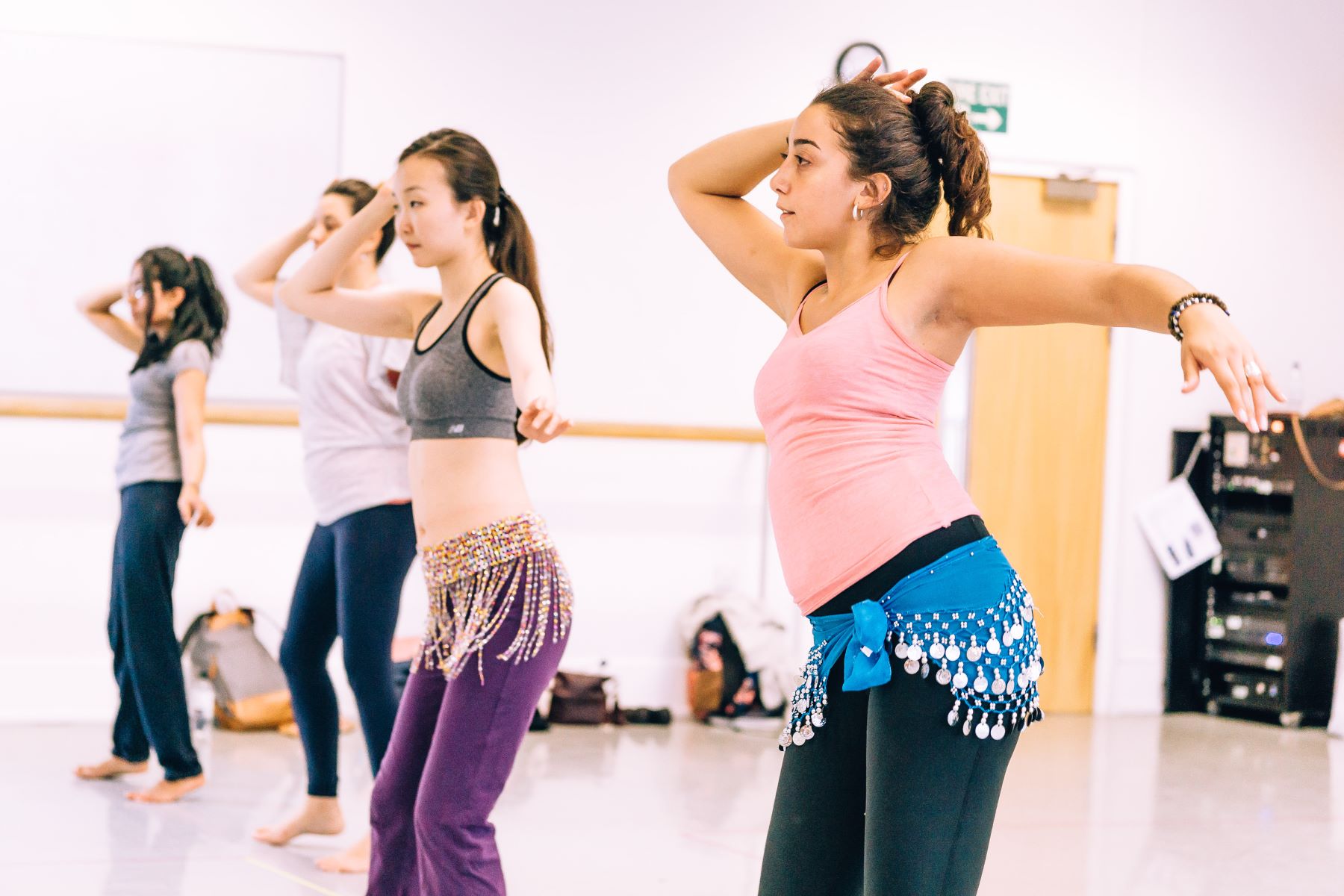Home>Events & Info>Opera>What To Wear To An Opera
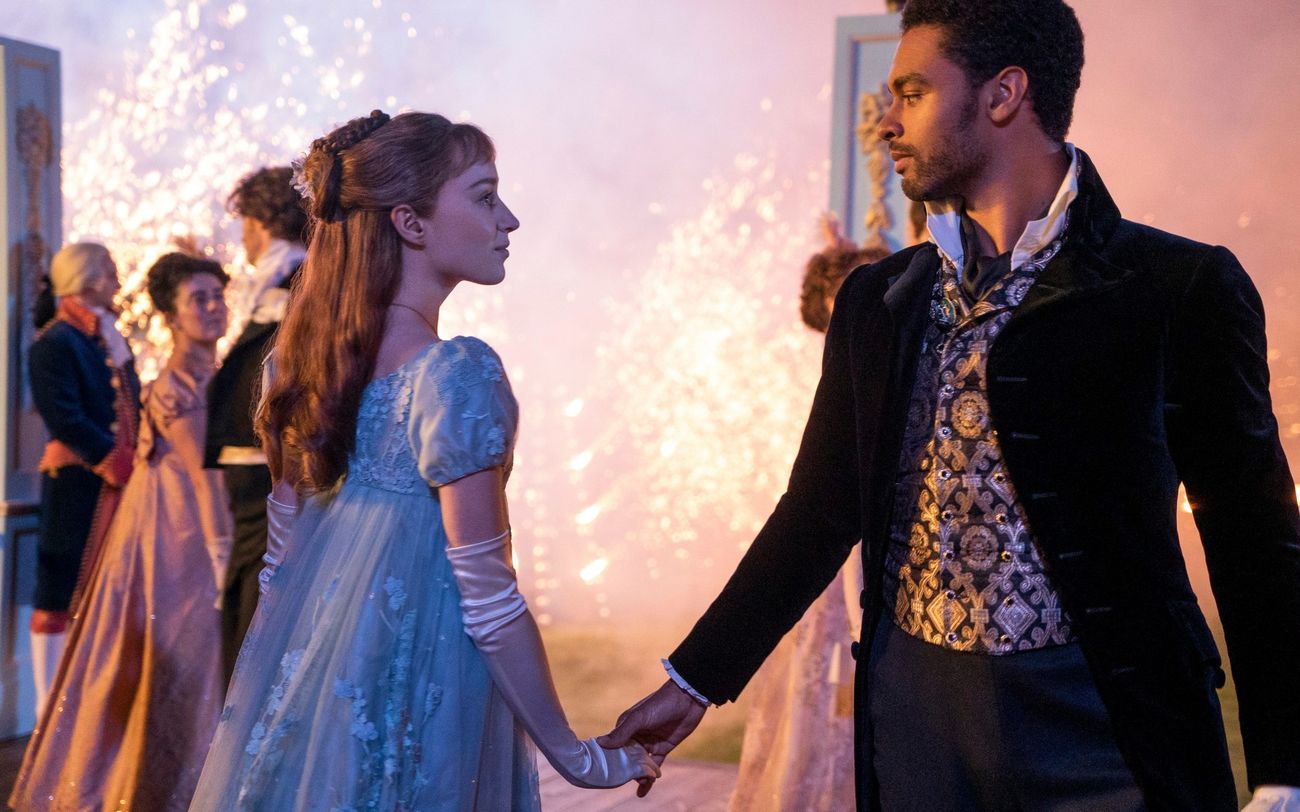

Opera
What To Wear To An Opera
Modified: January 22, 2024
Discover the perfect ensemble for attending an opera, whether it's a black-tie event or a more casual performance. Find out what to wear to an opera for a truly memorable experience.
(Many of the links in this article redirect to a specific reviewed product. Your purchase of these products through affiliate links helps to generate commission for AudioLover.com, at no extra cost. Learn more)
Table of Contents
- Introduction
- Understanding Opera Dress Codes
- Formal Opera Attire for Men
- Formal Opera Attire for Women
- Semi-Formal Opera Attire for Men
- Semi-Formal Opera Attire for Women
- Casual Opera Attire for Men
- Casual Opera Attire for Women
- Tips for Choosing the Right Accessories
- Common Fashion Mistakes to Avoid
- Conclusion
Introduction
Attending the opera is not just an opportunity to enjoy a beautiful performance; it’s also a chance to showcase your sense of style and elegance. As with any sophisticated event, there are certain dress codes to follow when attending the opera. However, these dress codes can vary depending on the opera house and the type of performance you are attending. In this article, we will explore the different dress codes for opera events and provide you with useful tips on what to wear.
Opera is known for its grandeur and opulence, and it is common for opera houses to enforce formal dress codes for evening performances. This means that you should dress in your best attire to match the elegance and splendor of the venue. However, keep in mind that not all opera events require the same level of formality. Some may have a more relaxed dress code, while others may have specific themes that allow for more casual attire.
When deciding what to wear to an opera, it is essential to consider the type of performance you are attending. Is it a world-renowned opera at a prestigious opera house? Or is it a more intimate and casual event at a local theater? Understanding the dress code expectations will help you make the appropriate choice and avoid feeling out of place.
Additionally, it is important to remember that dressing for the opera is not just about adhering to dress codes; it is also a reflection of personal style and taste. While guidelines exist, you can still inject your own individuality into your attire. Whether you prefer classic and formal looks or like to add a modern twist to your outfit, there is room for creativity within the boundaries of the dress code.
In the following sections, we will explore the different dress codes for opera events, including formal, semi-formal, and casual attire. We will provide detailed suggestions for both men and women to ensure you have all the necessary information to dress appropriately and make a stylish impression at your next opera experience.
Understanding Opera Dress Codes
When attending an opera, it is important to understand the various dress codes that may be in place. The dress code typically depends on the formality of the event and the specific guidelines set by the opera house. Here are the three main types of opera dress codes you are likely to encounter:
- Formal: Formal dress codes are the most common for opera events. This means wearing attire that is traditionally associated with black-tie events. For men, this usually entails a tuxedo, a formal dress shirt, a bow tie, and dress shoes. Women should opt for a long evening gown, dressy cocktail dress, or a tailored pantsuit in a formal fabric. It is important to choose elegant and refined pieces that project sophistication and class.
- Semi-Formal: Semi-formal dress codes offer a slightly more relaxed option. For men, this can mean wearing a dark suit with a dress shirt and tie. Women can opt for a formal cocktail dress, a dressy skirt or pants with a dressy blouse, or a tailored suit. Semi-formal attire should still be polished and sophisticated, but with a slightly less formal feel than black-tie attire.
- Casual: Casual opera dress codes are becoming more prevalent, especially for daytime or outdoor performances. Casual attire allows for more flexibility and personal style. Men can wear dress slacks or chinos with a dress shirt and a blazer or sports coat. Women have the option to wear a dress, a skirt or pants with a blouse, or even a chic jumpsuit. The key is to select garments that are comfortable yet stylish, ensuring that you still look put-together and appropriate for the occasion.
It is important to note that some opera houses may have specific dress code policies, so it is always a good idea to check their guidelines before attending. Additionally, if you are unsure about the dress code, it is better to err on the side of being slightly overdressed. It is better to be the best-dressed person in the room than to feel underdressed and out of place.
Remember that dressing for the opera is about more than just adhering to the dress codes. It is a way to show respect for the art form and the performers, as well as to enhance your own experience. By dressing appropriately, you contribute to the overall ambiance and create a sense of occasion that adds to the magic of the opera.
Now that we have a better understanding of opera dress codes, let’s explore the specific attire recommendations for men and women for each dress code in the following sections.
Formal Opera Attire for Men
When it comes to formal opera attire for men, the key is to exude elegance and sophistication. Here are the essential elements to consider when dressing formally for an opera:
- Tuxedo: A tuxedo is the quintessential formal attire for men. Opt for a well-tailored black or midnight blue tuxedo that fits you perfectly. Choose a jacket with a shawl or peak lapel, and pair it with matching trousers.
- Dress Shirt: Wear a crisp white or light-colored dress shirt made of high-quality fabric. Make sure it is well-pressed and fits you well. While a traditional tuxedo shirt with a pleated front can be a classic choice, a plain dress shirt with a French cuff and a stylish collar is also acceptable.
- Bow Tie: Tie your ensemble together with a black or midnight blue bow tie. The bow tie should be self-tied rather than pre-tied for a more sophisticated look. Make sure to practice tying it beforehand to ensure a neat and symmetrical knot.
- Vest or Cummerbund: Consider adding a vest or cummerbund to your outfit for an extra touch of elegance. Opt for a matching color to your tuxedo, such as black or midnight blue, and make sure it complements your overall look.
- Shoes: Complete your formal attire with polished black leather dress shoes. Choose a style like Oxfords or Derby shoes that are sleek and sophisticated. Make sure they are comfortable as you’ll likely be on your feet for an extended period.
- Accessories: Pay attention to details by adding accessories that elevate your formal attire. A pocket square, cufflinks, and a formal watch can add a touch of refinement. Keep jewelry and other accessories to a minimum to maintain a classy and understated look.
Remember to have your tuxedo professionally fitted to ensure it looks sharp and tailored to your body. Pay attention to the overall fit and silhouette, making sure not to opt for an overly boxy or tight-fitting tuxedo.
By following these guidelines for formal opera attire, you’ll be ready to step into the opera house with confidence and style. Whether you’re attending a gala performance or a prestigious event, your formal attire will complement the grandeur of the occasion.
Formal Opera Attire for Women
Formal opera attire for women revolves around dressing in elegant, glamorous, and sophisticated outfits. Here are some essential components to consider when choosing formal attire for an opera:
- Evening Gown: Opt for a floor-length evening gown in a luxurious fabric such as silk, satin, or velvet. Choose a style that flatters your body shape and makes you feel confident. Classic colors like black, navy, or deep jewel tones are timeless choices for formal events.
- Cocktail Dress: If you prefer not to wear a full-length gown, a formal cocktail dress is also appropriate for a formal opera. Look for a dress that falls just below the knee or at tea length, and choose a style that exudes elegance and sophistication.
- Tailored Pantsuit: For a modern take on formal opera attire, a tailored pantsuit is a fashionable option. Opt for a pantsuit in a luxurious fabric with a tailored blazer and matching trousers. Pair it with a dressy blouse or camisole to complete the look.
- Accessories: Accessories play a crucial role in formal opera attire for women. Consider adding statement jewelry such as a necklace, earrings, or a bracelet to enhance your ensemble. A clutch or small handbag in a complementary color can also add a touch of elegance. Don’t forget to choose appropriate footwear, such as heels or dressy flats, that are both stylish and comfortable.
- Hair and Makeup: Pay attention to your hair and makeup, as they can elevate your overall look. Opt for an updo, soft waves, or a sleek hairstyle that complements your chosen outfit. For makeup, choose a sophisticated and polished look. Focus on enhancing your features with well-defined eyes, a subtle blush, and a statement lip color.
When selecting your formal opera attire, take into account the venue and the event itself. Some opera houses may have a more traditional atmosphere, while others may be more contemporary. Consider the overall ambiance and the type of performance you will be attending, as this can inform your outfit choices.
Remember that the goal of formal opera attire for women is to exude elegance and grace. Choose garments that fit well, flatter your figure, and make you feel confident. By following these guidelines, you’ll be dressed to impress and ready to enjoy the opera in style.
Semi-Formal Opera Attire for Men
For occasions with a semi-formal dress code, men have the opportunity to dress stylishly while maintaining a slightly more relaxed aesthetic. Here are some key elements to consider when putting together a semi-formal opera outfit:
- Suit: Opt for a well-fitted suit in a dark or neutral color, such as navy, charcoal, or gray. Choose a suit made from high-quality fabric that drapes well on your body. Ensure that both the jacket and trousers are tailored to fit you properly.
- Dress Shirt: Select a crisp, finely tailored dress shirt in a solid color or subtle pattern. White or light blue are classic choices that pair well with any suit color. Make sure the shirt is clean, ironed, and fits you well.
- Tie: Complete your semi-formal ensemble with a polished tie that complements your suit and shirt. Opt for a silk tie in a solid color or a subtle pattern. Avoid overly flashy or novelty ties and opt for a more sophisticated look.
- Shoes: Choose dress shoes that match the formality of your outfit. Brown or black leather dress shoes are excellent choices. Ensure that your shoes are clean, polished, and in good condition. Consider wearing dress socks that match or complement your suit color.
- Optional Extras: Depending on the occasion and personal preference, you can add some accessories to enhance your ensemble. A pocket square, cufflinks, and a stylish watch can add a touch of refinement and personality to your outfit.
It is important to strike a balance between formal and casual with a semi-formal opera attire. The goal is to look polished and put-together without going overboard on the formality. You want to create a stylish and sophisticated look that is appropriate for the event.
Remember, semi-formal attire allows for some flexibility, so feel free to express your personal style while adhering to the general guidelines. However, it is best to avoid overly casual elements such as jeans, sneakers, or loud patterns that may detract from the overall formal aesthetic.
By following these tips for semi-formal opera attire, you’ll strike the perfect balance between sophistication and comfort, ensuring you look dashing and refined at the opera.
Semi-Formal Opera Attire for Women
For women attending a semi-formal opera event, there are various options to create a stylish and sophisticated outfit that balances elegance with a more relaxed appeal. Here are some key elements to consider when putting together a semi-formal opera look:
- Cocktail Dress: Opt for a chic cocktail dress that falls just below the knee or at tea length. Look for dresses made from luxurious fabrics such as silk, chiffon, or lace. Choose colors and prints that complement the season and the overall ambiance of the event.
- Dressy Separates: Consider pairing a tailored skirt with a dressy blouse or a sophisticated top with wide-leg trousers. This allows for versatility and allows you to mix and match pieces for different semi-formal occasions. Opt for fabrics that have a polished appearance and select complementary colors.
- Statement Accessories: Elevate your semi-formal outfit with statement accessories. Add elegance with a statement necklace, earrings, or a bracelet. Choose accessories that complement your outfit and add a touch of glamour without overpowering your overall look.
- Shoes: Choose elegant footwear that complements your outfit. Opt for dress shoes such as heels or dressy flats in a coordinating color. Consider the comfort of the shoes as you may be on your feet for an extended period.
- Hair and Makeup: Pay attention to your hair and makeup to complete your semi-formal look. Style your hair in an updo, soft waves, or a sleek and polished look that enhances your outfit. Keep your makeup polished and sophisticated, focusing on enhancing your natural features.
Semi-formal opera attire allows for more flexibility and personal style while maintaining an air of elegance. You have the freedom to incorporate fashion-forward elements or experiment with colors and prints that suit your taste. However, it is still important to ensure that your outfit remains polished and appropriate for the occasion.
Avoid dressing too casually or wearing overly revealing or casual pieces that are better suited for everyday wear. Remember, the aim is to strike a balance between formal and casual, exuding sophistication and class without being overly formal.
By following these guidelines for semi-formal opera attire, you can create a stylish and refined look that perfectly blends elegance and comfort, making you ready to enjoy a fantastic night at the opera.
Casual Opera Attire for Men
When the occasion calls for a casual opera attire, men have the opportunity to dress in a comfortable yet stylish ensemble. Here are some key elements to consider when putting together a casual opera outfit:
- Dress Pants or Chinos: Opt for a pair of well-fitted dress pants or chinos in a neutral color like black, navy, or gray. Choose pants that are comfortable and made from high-quality fabric.
- Dress Shirt: Select a button-down dress shirt in a solid color or a subtle pattern. Make sure the shirt is clean, well-pressed, and fits you well. Consider opting for lighter fabric options such as linen or cotton for a more relaxed feel.
- Sport Coat or Blazer: Add a touch of refinement to your casual outfit with a sport coat or blazer. Opt for a lightweight fabric like linen or cotton to match the relaxed vibe. Consider choosing a complementary color that coordinates with your pants and shirt.
- Shoes: Choose footwear that is both stylish and comfortable. Opt for dress shoes such as loafers or Oxford shoes in leather or suede. Make sure they are clean, polished, and in good condition.
- Accessories: Add a finishing touch to your casual opera attire with accessories that elevate your look. Consider a stylish belt, a pocket square, or a statement watch to add a touch of personal style.
Keep in mind that while the dress code may be casual, it is still important to maintain a polished and put-together appearance. Avoid overly casual elements like sneakers, shorts, or graphic t-shirts. Instead, aim for a relaxed yet smart look that complements the ambiance of the opera house.
When putting together your casual opera outfit, consider the location and the nature of the performance. Outdoor opera events or daytime performances may call for lighter colors and fabrics, while indoor evening performances may require a more sophisticated casual look.
By following these tips for casual opera attire, you can strike the perfect balance between style and comfort. You’ll be ready to enjoy the opera experience in a relaxed and fashionable ensemble, reflecting your personal style while respecting the occasion.
Casual Opera Attire for Women
When attending a casual opera event, women have the opportunity to showcase their personal style while maintaining a comfortable and relaxed look. Here are some key elements to consider when putting together a casual opera outfit:
- Dresses: Opt for a chic and comfortable dress that suits the occasion. Choose a dress made from a breathable fabric like cotton, linen, or jersey. Look for styles that flatter your figure and are suitable for the event, such as sundresses, maxi dresses, or shirt dresses.
- Tops and Bottoms: Mix and match separates for a stylish yet casual opera attire. Pair a stylish blouse with tailored pants or a skirt. Choose fabrics and cuts that are relaxed and flowy, such as silk, chiffon, or linen.
- Footwear: Choose footwear that is both comfortable and fashionable. Opt for stylish flats, sandals, or wedges that complement your outfit. Avoid overly casual styles like flip-flops or athletic shoes, as they may not be appropriate for the occasion.
- Accessories: Enhance your casual opera look with the right accessories. Add a statement necklace, earrings, or a bracelet to elevate your outfit. Consider a fashionable handbag or clutch to complete your ensemble.
- Hair and Makeup: Keep your hair and makeup fresh and natural to maintain a relaxed vibe. Opt for loose waves, a simple updo, or a sleek ponytail. Choose a natural or neutral makeup look that enhances your features without being overly dramatic.
It’s important to strike a balance between comfort and style when dressing casually for the opera. While the dress code may be more relaxed, it’s still crucial to maintain a polished appearance that respects the occasion.
Consider the location and time of the opera event when selecting your casual attire. Outdoor or daytime performances may call for lighter colors and breathable fabrics, while indoor evening performances may allow for slightly dressier or more sophisticated casual looks.
Remember, casual opera attire should still reflect your personal style and taste. Embrace a relaxed and fashionable look that complements the ambiance of the opera while making you feel comfortable and confident.
By following these guidelines for casual opera attire, you’ll put together an ensemble that showcases your personal style while capturing the casual elegance and sophistication of the opera experience.
Tips for Choosing the Right Accessories
Choosing the right accessories can elevate your opera attire and add a touch of glamour to your overall look. Here are some helpful tips to keep in mind when selecting accessories for opera events:
- Consider the Dress Code: Take the dress code into account when choosing your accessories. Formal opera attire may call for more refined and elegant pieces, while casual attire allows for more creative and playful accessories.
- Complement Your Outfit: Select accessories that complement the colors and style of your outfit. Consider the hues, patterns, and textures of your clothing when choosing jewelry, scarves, and handbags. Aim for a cohesive and harmonious look.
- Avoid Overwhelming Your Look: Be mindful not to overpower your ensemble with too many accessories. Choose a focal point, such as a statement necklace or a bold pair of earrings, and let it shine. Keep the rest of your accessories more understated to create a balanced and elegant look.
- Pay Attention to Proportions: Consider the proportions of your accessories in relation to your outfit. If you’re wearing a more voluminous dress or top, opt for smaller and more delicate accessories. If your outfit is more streamlined and simple, you can explore bolder and more statement-making accessories.
- Think About Comfort: Make sure your accessories are comfortable to wear for the duration of the opera event. Choose shoes that you can comfortably walk and stand in, and avoid jewelry or headpieces that might become irritating or distracting over time.
- Balance and Layer: Experiment with layering accessories to create interest and depth in your look. Consider mixing different jewelry pieces or adding a scarf or a belt to enhance your outfit. However, be mindful not to overdo it—keep the overall balance and coherence of your ensemble in mind.
- Showcase Your Personal Style: Use accessories as a way to express your personal style and add a unique touch to your opera attire. Whether it’s a vintage brooch, a colorful silk scarf, or a quirky handbag, let your accessories reflect your personality and make a statement.
Remember that while accessories can enhance your opera outfit, they should never overshadow the main focus—your attire and the performance itself. Choose accessories that enhance your look, add a touch of sophistication, and make you feel confident without overpowering the overall ensemble. With these tips in mind, you’ll be able to select the perfect accessories to complete your opera attire and make a stylish impression.
Common Fashion Mistakes to Avoid
When getting ready for an opera event, it’s important to be aware of common fashion mistakes that can detract from your overall style and impact. Here are some key fashion mistakes to avoid:
- Over or Underdressing: Failing to adhere to the dress code can make you feel out of place. Make sure to accurately determine the level of formality required for the occasion and dress accordingly. Avoid overdressing or underdressing by researching the dress code guidelines beforehand.
- Poor-Fitting Clothing: Ill-fitting clothing can ruin an otherwise stylish outfit. Avoid clothes that are too tight, too loose, or don’t flatter your body shape. Invest in tailoring if needed to ensure that your garments fit you perfectly.
- Overdoing Accessories: While accessories can enhance your outfit, be cautious not to overdo it. Avoid wearing too many statement pieces or overwhelming your look with unnecessary jewelry. Keep it balanced by choosing a focal point and letting it shine while keeping the rest of your accessories more understated.
- Mismatched Colors or Patterns: Be mindful of your color and pattern choices. Avoid clashing colors or patterns that distract from the overall aesthetic of your outfit. Instead, opt for complementary colors or use color blocking techniques to create a cohesive and harmonious look.
- Inappropriate Footwear: Your choice of footwear is crucial to complete your ensemble. Avoid wearing overly casual or inappropriate shoes, such as sneakers or flip-flops. Opt for dress shoes, heels, or dressy flats that complement your outfit and the overall formality of the event.
- Ignoring Personal Comfort: It’s important to prioritize your comfort when selecting your opera attire. Avoid wearing clothes or shoes that are uncomfortable or restrictive. If you’re not comfortable in your outfit, it will be evident in your body language and overall demeanor.
- Neglecting Grooming and Appearance: Personal grooming is just as important as your outfit choice. Avoid neglecting your hair, makeup, or overall grooming routine. Ensure that you are well-groomed, and your hair and makeup are done in a way that complements your outfit and the occasion.
- Ignoring the Venue or Theme: Consider the venue and theme of the opera event when selecting your attire. Avoid choosing outfits that are too casual or don’t align with the ambiance or specific theme of the performance. Be mindful of the setting and dress appropriately.
By avoiding these common fashion mistakes, you can ensure that your opera attire is on point and allows you to make a stylish and confident impression. Remember that the goal is to showcase your personal style while adhering to the appropriate dress code and enhancing the overall opera experience.
Conclusion
Dressing appropriately for an opera event is not just about adhering to dress codes; it is a chance to showcase your personal style and enhance your overall experience. By understanding the different dress codes and following the guidelines provided for formal, semi-formal, and casual attire, you can create a stylish and sophisticated look that is suitable for the occasion.
For formal opera attire, men should opt for a well-tailored tuxedo, while women can choose a floor-length evening gown or a formal cocktail dress. Semi-formal attire allows for slightly more relaxed options, such as a dark suit or a tailored pantsuit for men, and a cocktail dress or dressy separates for women. Casual opera attire calls for comfortable and stylish outfits, such as dress pants or chinos with a dress shirt and blazer for men, and chic dresses or dressy separates for women.
In addition to the right clothing choices, selecting the appropriate accessories can enhance your opera look. Be sure to choose accessories that complement your outfit, strike a balance, and showcase your personal style without overpowering the overall ensemble.
Finally, it’s crucial to be aware of common fashion mistakes to avoid, such as over or underdressing, wearing ill-fitting clothing, overdoing accessories, mismatched colors or patterns, and neglecting personal comfort or grooming. By steering clear of these mistakes, you can ensure that your opera attire is refined, stylish, and appropriate for the occasion.
In conclusion, dressing for the opera is an opportunity to express your personal style while respecting the dress codes and the overall ambiance of the event. By carefully selecting your attire, accessorizing thoughtfully, and avoiding fashion mishaps, you’ll be ready to enjoy the magic of the opera while looking your very best.


